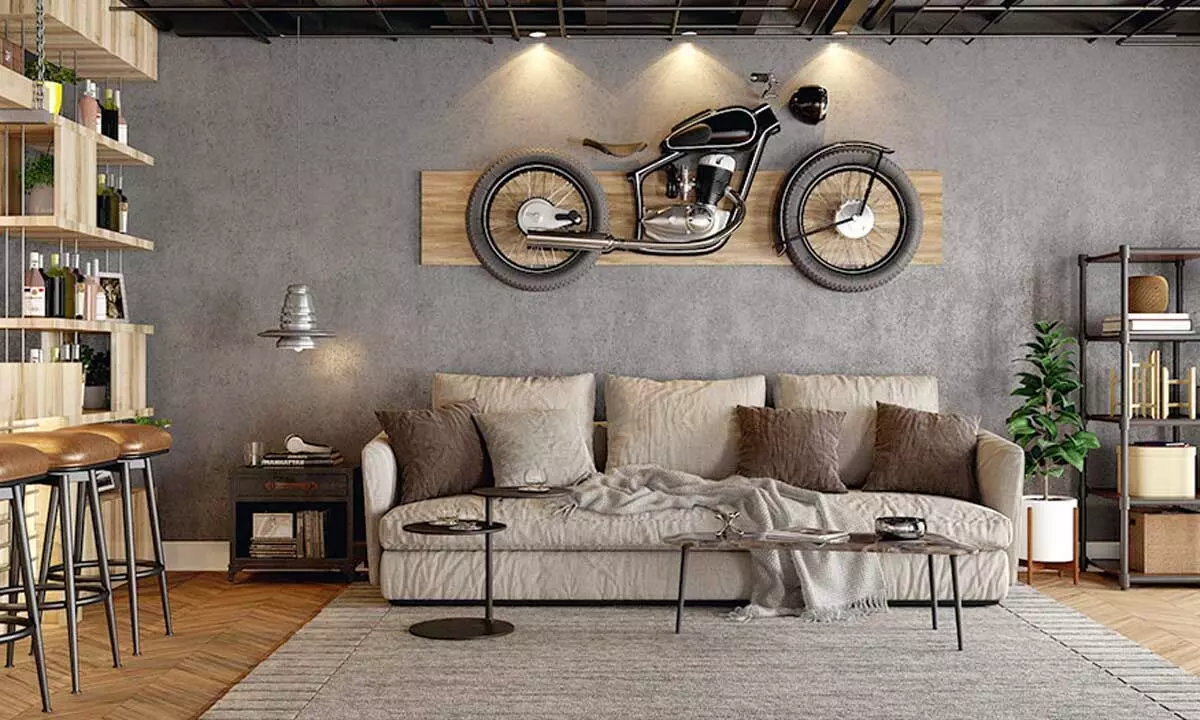Live
- ‘Democracy first, humanity first’: PM Modi in Guyana's parliament on two countries' similarities
- PKL Season 11: Telugu Titans register third straight win to top standings
- Is Pollution Contributing to Your COPD?
- NASA Unveils Underwater Robots for Exploring Jupiter's Moons
- Additional Central forces arrive in violence-hit Manipur
- AR Rahman and Saira Banu’s Divorce: Legal Insights into Common Issues in Bollywood Marriages
- 82.7 pc work completed in HPCL Rajasthan Refinery area: official
- Curfew relaxation extended in 5 Manipur districts on Friday
- Tab scam prompts Bengal govt to adopt caution over fund disbursement
- Tata Power inks pact with ADB for green projects worth $4.25 billion
Just In

Concrete, once confined to heavy construction and industrial uses, has transformed, infiltrating furniture and interior design
Hyderabad: Concrete, once confined to heavy construction and industrial uses, has transformed, infiltrating furniture and interior design. Its evolution revolutionized perceptions of this versatile material. Traditionally a structural cornerstone in buildings and infrastructure, concrete’s durability, strength, and adaptability have spurred designers and architects to explore its potential in creating innovative, aesthetically pleasing furniture and interior products. This exploration covers concrete’s history, manufacturing, advantages, limitations, and diverse applications in design.
A Brief Evolution of Concrete in Design
Concrete’s design journey traces back through ancient civilizations like the Romans, renowned for their use in structures like the Pantheon. Its significance escalated during the Industrial Revolution, but its artistic potential emerged in the 20th century. Visionaries like Le Corbusier and Frank Lloyd Wright experimented with concrete in architectural projects, sparking interest in its interior applications.
Manufacturing Process Crafting concrete furniture and interior products involves blending cement, water, aggregates, and sometimes additives to form a moldable mixture. Once poured into molds, the concrete cures and solidifies, yielding a robust final product. Diverse aggregates—sand, gravel, or crushed stone—alter the piece’s appearance and texture.
Advantages of Concrete in Design
Durability: Concrete’s exceptional endurance ensures longevity, making it a sound investment.
Design Flexibility: Its malleability allows for diverse design possibilities—from minimalist to intricate creations.
Aesthetic Appeal: The raw, industrial beauty of concrete complements modern and contemporary interior designs.
Fire Resistance: Inherent fire-resistant properties make it a safe choice for interiors.
Sustainability: Eco-friendly, especially when sourced locally, with recyclability for future projects.
Customization: Pigments, aggregates, and additives allow for unique colors, textures, and finishes.
Versatility: Used for tables, countertops, sinks, shelves, lighting fixtures, and decorative items.
Limitations and Challenges
Despite its advantages, concrete presents considerations for designers:
Weight: Concrete’s heaviness can pose challenges during installation and transportation.
Cracking: Improper curing or structural stress might lead to cracks, affecting appearance and integrity.
Coldness: Its inherent cold feel might not suit certain furniture without insulation.
Cost: Quality concrete pieces can be relatively expensive due to production and materials.
Maintenance: Requires proper care to prevent staining and maintain appearance.
Applications in Furniture and Interior Design
Concrete’s adaptability finds expression in various interior products:
Tables: Unique, sturdy surfaces for dining and coffee tables, often paired with contrasting base materials.
Countertops: Gaining popularity in kitchens and bathrooms for their contemporary appearance and durability.
Sinks: Customized, artistic forms adding flair to bathrooms and kitchens.
Lighting Fixtures: Modern, industrial vibes with intriguing light patterns and shadows.
Shelving: Blending functionality with style for practical storage solutions.
Wall Panels: Textured accent walls for depth and character in spaces.
Home Accessories: Vases, planters, and decorative objects infusing contemporary elegance.
In essence, concrete’s transition from a construction material to an integral design element underscores its adaptability and potential.
Despite challenges, its unique aesthetic and functionality make it a compelling choice for distinctive, durable interior spaces, adding industrial sophistication and modern elegance to homes and commercial areas.

© 2024 Hyderabad Media House Limited/The Hans India. All rights reserved. Powered by hocalwire.com







